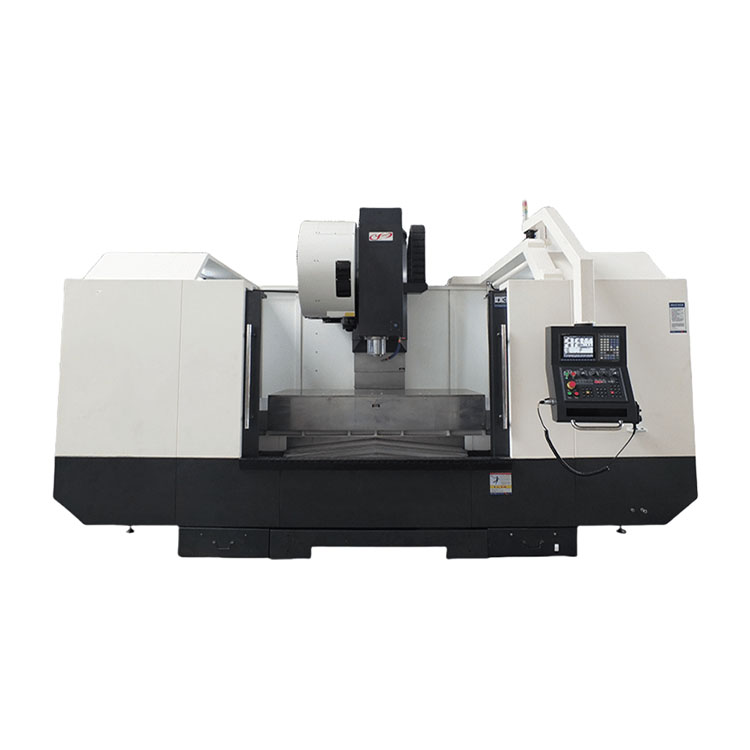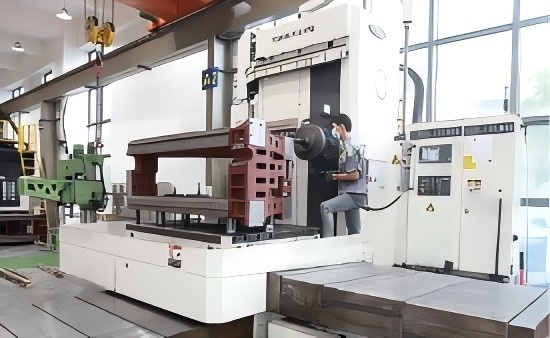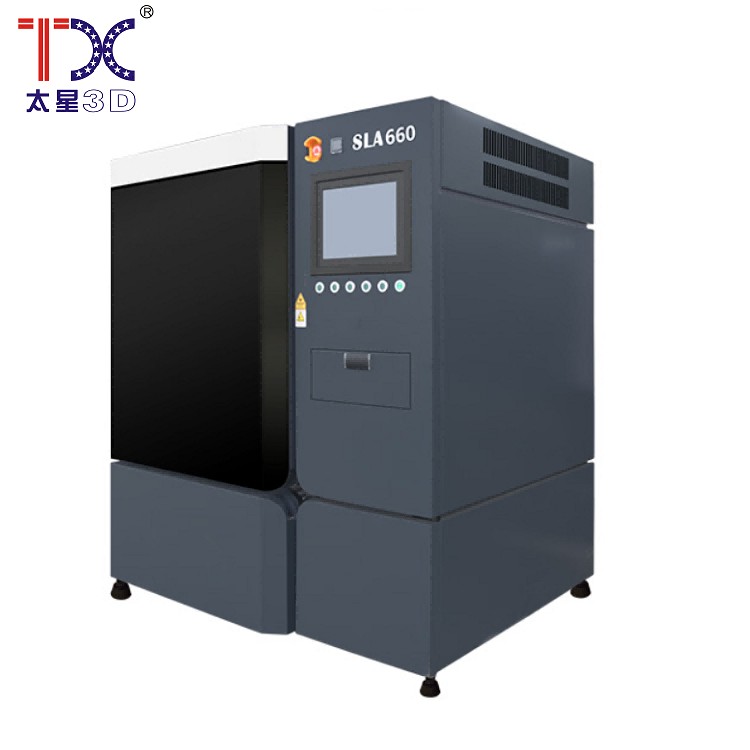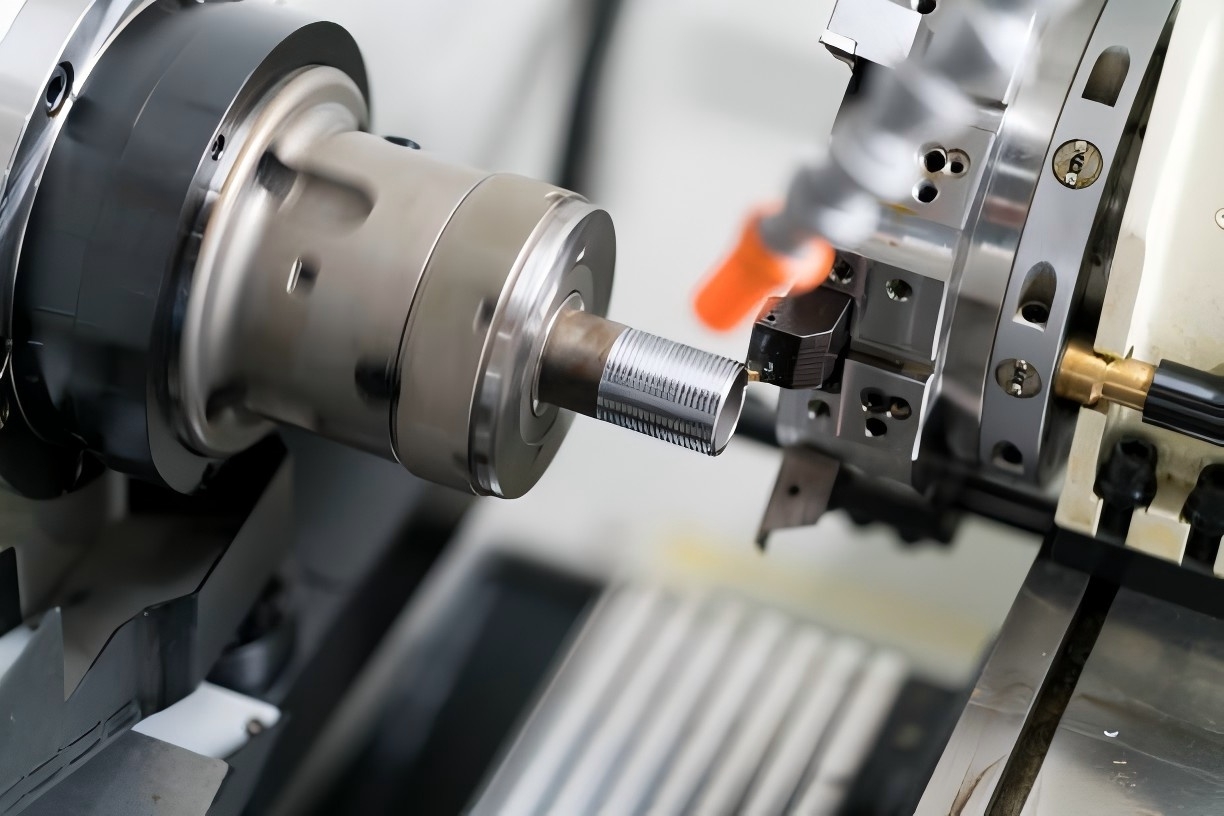
8 key advantages of high -speed processing technology
2024-11-12
Manufacturers often face the problem of maintaining speed and accuracy during mechanical processing operations. Traditional methods reduce efficiency, as they distinguish too much heat, which leads to wear of the tool and reducing accuracy. High -speed processing (HSM) offers a solution that uses advanced technologies in combination with high spindle speeds and feeds. This method minimizes the release of heat and wear, while providing an accurate cut and a more smooth surface. By accepting HSM, manufacturers can reduce production time and improve the overall quality of products and work efficiency.
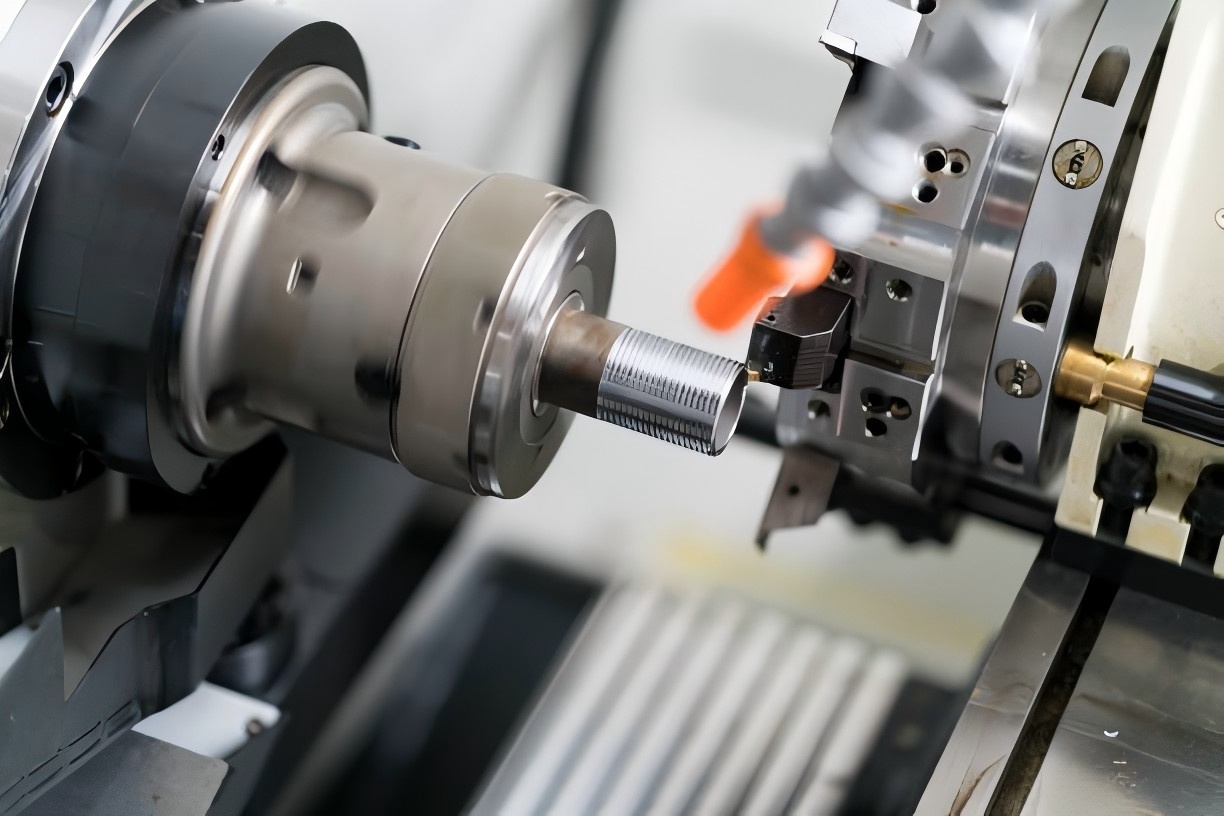
How HSM works
HSM works at significantly higher spindle speeds, which leads to a faster removal of the material and more smooth surfaces. CNC and CAM technologies improve this process, allowing you to accurately control the movements of the tool, ensuring efficiency and accuracy. CNC programming allows you to adjust in real time to optimize speed and supply, which makes HSM ideal for quick and efficient production of complex parts.
Key advantages of high -speed processing
High -speed processing offers several key advantages for modern production. An increase in the speed of the spindle and reducing the cycle time increases productivity and accuracy. These advantages, a longer tool for the tool and the efficiency of using materials make HSM the best choice in many industries.
1. Increased performance
One of the main advantages of high -speed processing is the ability to significantly reduce the cycle time. Due to the higher spindle speed and the operation rate, the operation can be performed in less time than when using traditional processing methods. Reducing the cycle time directly leads to faster production, allowing manufacturers to perform more tasks for a certain period of time. For example, the details for the manufacture of which the clock used to go, now you can make in a matter of minutes, which optimizes the production process.
Increased speed allows you to produce more details per hour. In large -scale production, increasing efficiency is crucial. High -speed processing minimizes the downtime between operations and provides continuous production, increasing productivity without prejudice to quality. Manufacturers benefit from reducing the deadlines for execution of orders and improving work processes, which makes high -speed processing the best solution for industries, which requires rapid and large -scale production. By increasing productivity, enterprises can more effectively satisfy demand and increase profitability.
| Factors | Traditional processing | High -speed processing |
| Cycle time (on part) | 20 minutes | 8 minutes |
| Details produced in an hour | 3 details | 7 details |
| Operational efficiency | 70% | 95% |
| Downtime | 1 hour | 15 minutes |
| Annual production (at an 8-hour shift) | 5760 parts/year | 13440 parts/year |
2. Increased accuracy
High -speed processing increases accuracy due to minimizing heating and vibration during operation. Traditional processing methods often lead to significant overheating, which leads to the expansion and deformation of the material, which leads to inaccuracies. However, with high -speed processing, the high speed of the spindle and the lighter cut reduce heat transfer, retain the structural integrity of the material and increase overall accuracy.
The accuracy of size is especially important when processing parts of complex geometry and complex parts. High -speed processing allows manufacturers to achieve more rigid tolerances, guaranteeing the exact manufacture of even the most detailed parts. This is critically important in the aerospace and medical industry, where small deviations in the sizes of parts can affect performance.
| Material/geometry | Traditional processing (tolerance range) | High -speed processing (tolerance range) |
| Simple metal parts | ± 0.05mm | ± 0.01mm |
| Complex metal details | ± 0.1mm | ± 0.02mm |
| Composite | ± 0.15mm | ± 0.05mm |
| Polymer | ± 0.2mm | ± 0.08mm |
3. Improve surface quality.
High -speed processing provides a more smooth surface, which often eliminates the need for secondary processing. The combination of the high speed of the spindle and the exact trajectories of the tool reduces the friction between the cutting tool and the material, which leads to a cleaner cut. As a result, the parts have the best surface quality after machining, which reduces the need for additional processes, such as grinding or polishing.
Improved surface quality directly affects the requirements for subsequent processing and polishing. In traditional processing, rough surfaces often require numerous stages of finishing processing to achieve the desired smoothness. Thanks to high -speed processing, more smooth surfaces can reduce the time and efforts necessary for these processes, thereby accelerating production cycles and reducing costs. This advantage is especially valuable for industries that require high -precision parts with excellent surface quality, such as aerospace, automobile and medical industries.
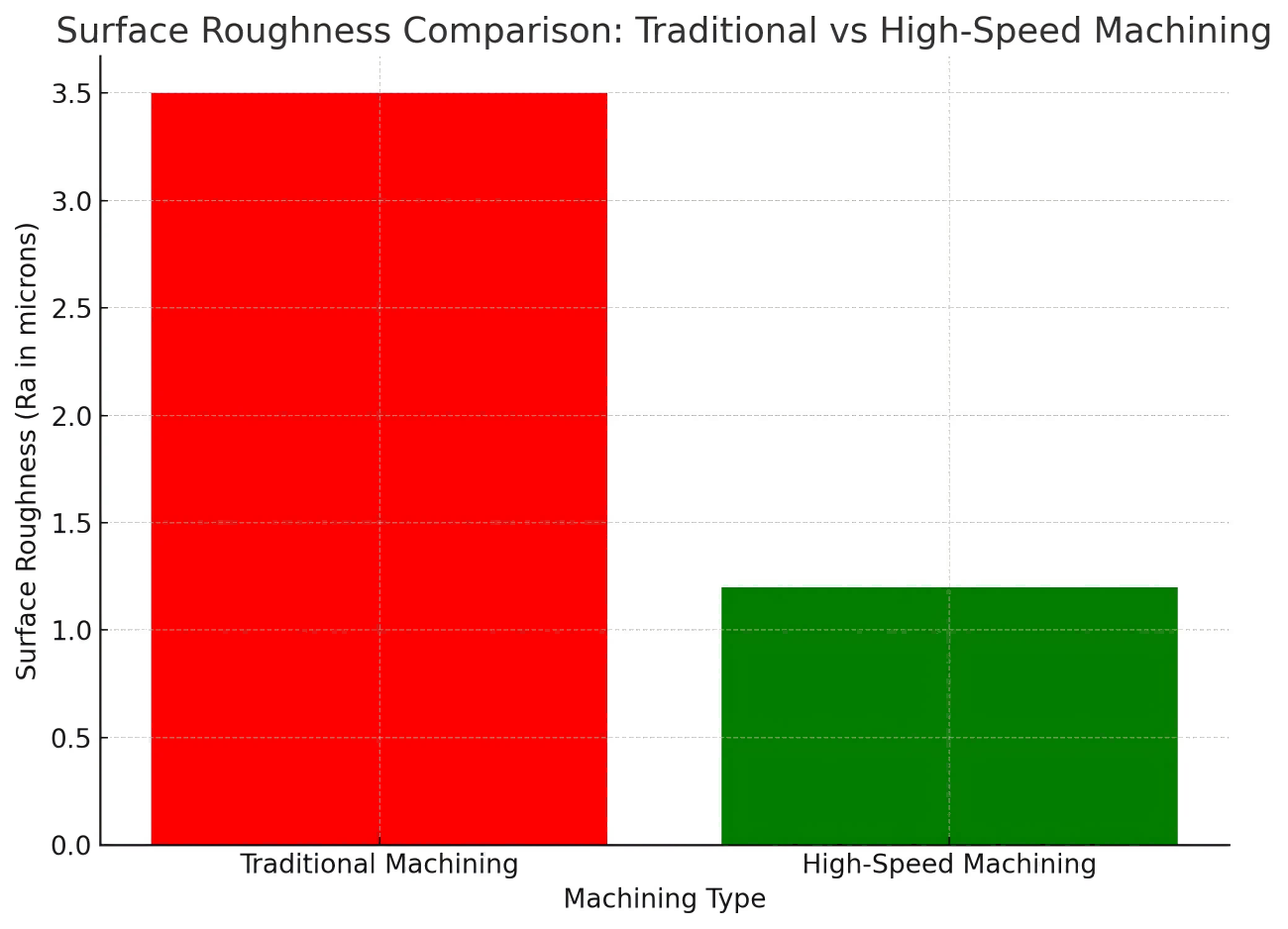
4. Extend the life of the instrument
High -speed processing extends the service life of cutting tools by reducing cutting and temperature forces. Traditional processing methods often generate excessive heat and strength, which leads to the rapid wear of the tool. However, with high -speed processing, lighter and rapid cuts minimize friction, maintaining the temperature of the tool and reducing wear. This leads to an increase in the life of the tool and maintaining cutting efficiency over time.
Reducing the wear of the tool reduces the need for frequent replacement of the tool, which directly increases the efficiency of work. When using traditional methods during the production cycle, several shifts of the tool are often required, which leads to delays and increase costs. High -speed processing minimizes these breaks, extending the life of the tool, providing continuous production and reducing downtime during maintenance. This increases productivity and reduces the total tool costs, making high -speed processing with a more economical solution for long -term production needs.
5. Energy efficiency
High -speed processing (HSM) increases energy efficiency by reducing energy consumption to part. Faster processing cycles mean reducing the production time of each part, which reduces the total energy consumption of the machine. Traditional processing methods often require a longer processing time, which leads to higher energy consumption. On the contrary, the high speed of the HSM spindle and effective cutting operations allow you to make parts faster, which leads to a decrease in specific energy consumption.
HSM also reduces energy consumption in a wider production process. The non -precious operation of the machine is reduced, since high -speed processing minimizes the need for secondary operations and a change in the tool. In addition, the increased tool for the tool and the more smooth surfaces achieved thanks to HSM reduce energy consumption for the tasks of subsequent processing, such as polishing and grinding. HSM contributes to a more sustainable and economically effective production process by optimizing production and minimizing unnecessary energy consumption.
6. Reducing material waste
High -speed processing (HSM) significantly reduces the waste of the material due to more accurate cuts. Traditional processing methods often remove excess material, which leads to an increase in the percentage of marriage. On the contrary, precision cutting tools HSM remove only the necessary material, minimizing waste. Such accuracy is especially important in sectors with complex details, where even minor errors can lead to overspending of the material and an increase in production costs.
Effective use of raw materials is especially important when working with expensive metals, such as titanium or high -quality aluminum. Reducing the waste from the material during processing, HSM allows manufacturers to use raw materials as efficiently as possible. This reduces production costs and makes the production process more stable. In the aerospace and medical industry, where the cost of materials is high, the ability of HSM to reduce the amount of waste can bring economic and environmental benefits. The reduction in the waste of materials also helps optimize the management of reserves, since the production of the same number of parts requires less raw materials.
7. Increase in automation and reduction of the intervention of the operator.
High -speed processing (HSM) uses automation to reduce the need for constant intervention of the operator, thereby minimizing human errors. CNC and CAM technologies automate processing, allowing machines to perform complex operations with minimal control. This reduces the likelihood of errors that can occur during manual processing, and increases the overall accuracy of production.
Automation in HSM also increases the repeatability and consistency of production. After programming, the machine can repeat the same operation several times without any changes. This is especially useful in mass production, where maintaining the stable quality of many parts is crucial. Reducing the need for manual tuning guarantees that each part made corresponds to the same specifications, which reduces the number of defects and increases the overall effectiveness.
8. Increased flexibility
High -speed processing (HSM) provides increased flexibility due to the processing of various materials. Whether it is solid metals, such as titanium and steel, modern composites or polymers, HSM can adapt to various types of materials without prejudice to accuracy and speed. Such versatility makes it an ideal solution for industries that require accurate processing of various materials, such as aerospace, automobile and medical industries.
In addition, HSM is well suited for mass production and prototype development. The speed and accuracy of mass production provide stable results in the manufacture of parts of a large volume. At the same time, the accuracy and adaptability of HSM can effectively create prototypes where attention to details and accuracy are crucial. This double functionality allows manufacturers to easily switch between large -scale production and the development of non -standard details, which makes HSM an important tool for various production needs.
Advantages of high -speed processing (HSM) and its impact on production
The main points of the section Details are the potential impact on production
Increased performance. Reducing the cycle time, increased performance. HSM machines can produce more details per hour due to the higher spindle speed and reduce the cycle time. Increase productivity, reduce the market entry and reduce labor costs.
Increased accuracy increased accuracy, reducing heating and vibration increased accuracy due to a decrease in thermal expansion and deviation of the tool. Critical for industries such as aerospace and medical, where strict tolerances are crucial for the performance of components.
Improved surface quality. A more smooth surface, minimum post -cutting. HSM provides a better surface, reducing or eliminating the need for polishing or grinding. Increase production efficiency, reduce costs and improve the aesthetics and productivity of the product.
Increased instrument service life. Reducing the wear of the tool and less replacements. Modern materials and coatings in tools extend the life of the tool and minimize downtime. Reduce the costs of equipment, equipment downtime and the intervention of the operator, increasing the overall efficiency of the process.
Energy efficiency decrease in energy consumption for each component. Faster cycles lead to less energy consumption per unit. Reducing downtime also reduces the total energy consumption. Reduce operating costs, support stable production and observe energy efficiency standards.
Reducing the waste of material. Accurate cutting reduces the amount of waste and effectively uses raw materials. The accuracy of HSM reduces the amount of waste, especially such expensive metals as titanium and Inconel. Reduce the costs of raw materials, increase profitability and reduce environmental impact by reducing the waste of materials.
Increased automation. Automated processes reduce human mistakes. CNC technology reduces manual intervention, providing stable quality and reducing the number of errors. Improves repeatability, reduces operator fatigue and allows large -scale production without the participation of the operator.
Increased flexibility. Suitable for various materials and production scale. The possibility of processing metals, composites and polymers. Ideal for prototyping and serial production. Allowing manufacturers to quickly adapt to changing requirements, requirements for materials and developing industry trends.
Technical requirements for modern CNC CNC machines
High -speed processing (HSM) requires modern CNC machines capable of working with high spindle speeds and feeds. These machines are designed to maintain stability and accuracy even when working at high speeds.
5-axial CNC machines and CNC 6-axial machines are especially important for HSM, since they can process complex geometry and provide greater flexibility. Additional axes provide more accurate movements, which makes them ideal for aerospace and automotive industries, where complex parts are often used.
High -performance cutting tools
HSM uses cutting tools made of durable materials such as solid alloy, ceramics or diamond. These materials are crucial for withstanding high temperatures and forces that occur during high -speed operations.
These tools have advanced coatings, such as titan-aluminum nitride (Tialn) or diamond-like carbon (DLC), to increase their durability and heat resistance. These coatings minimize wear, allowing the tool to remain acute for a longer period of time.
cooling and lubricant system
Cooling and lubrication are crucial for controlling heat released during high -speed treatment. Without proper cooling, excess heat can cause wear of the tool and deformation of the material, reducing the quality and life of the tool.
Lubrication of the minimum amount (MQL) is an effective system used in HSM. It gives a small amount of lubrication directly into the cutting zone, reducing friction and preventing overheating with minimal use of resources. MQL systems help reduce costs and make processing more stable.
The use of high -speed processing
Aerospace industry
High -speed processing (HSM) is widely used in the aerospace industry for processing light materials such as aluminum and titanium. These materials are crucial for the manufacture of parts, such as turbine blades that require high strength and lightweight. HSM provides accuracy when reducing production time, which makes it ideal for the details of the aerospace industry, requiring complex geometry and hard tolerances.

Automobile industry
In the automotive industry, HSM produces critical components, such as engine components, chassis and other performance components. Способность быстро и точно обрабатывать высокопрочные материалы имеет решающее значение для удовлетворения требований к производительности современных транспортных средств. HSM также позволяет ускорить создание прототипов и сократить производственные циклы, что делает его ценным инструментом в автомобильном производстве.
Medical industry
Медицинская промышленность полагается на высокоскоростную обработку при производстве высокоточных хирургических инструментов, имплантатов и медицинских устройств. Эти компоненты требуют исключительной точности и гладкой поверхности для обеспечения безопасности и функциональности пациента. Способность HSM обрабатывать сложные детали с минимальными ошибками делает его лучшим выбором для производителей медицинского оборудования.
Проблемы и ограничения высокоскоростной обработки
Высокая первоначальная стоимость
Одной из основных проблем высокоскоростной обработки (HSM) являются большие первоначальные инвестиции, необходимые для современных станков и инструментов. Прецизионные станки с ЧПУ и специализированные режущие инструменты, необходимые для HSM, стоят дороже, чем традиционное оборудование. Производители должны тщательно оценить соотношение затрат и выгод, чтобы определить, когда окупаемость инвестиций (ROI) оправдывает первоначальные затраты. Это особенно важно для малых предприятий, где капитал может быть ограничен.
Управление температурным режимом
Управление температурным режимом при высокоскоростной обработке является еще одной серьезной проблемой. Слишком высокая скорость вращения шпинделя приводит к чрезмерному нагреву, который, если его не контролировать должным образом, может деформировать детали и повредить инструменты. Для решения этой проблемы крайне важно оптимизировать систему охлаждения и методы смазки. Эффективное управление температурным режимом обеспечивает качество обрабатываемых деталей и продлевает срок службы режущего инструмента. Неспособность контролировать нагрев может привести к дорогостоящим доработкам, замене инструмента и простоям, что снизит преимущества HSM.
Будущая тенденция высокоскоростной обработки
гибридная технология обработки
Гибридная обработка сочетает в себе высокоскоростную обработку (HSM) с передовыми процессами, такими как аддитивное производство или лазерная резка. Эта интеграция повышает гибкость производства, позволяя производителям использовать несколько технологий в одном рабочем процессе.






